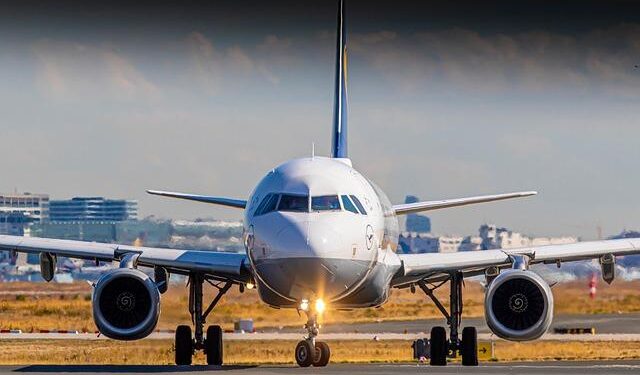Navi Mumbai International Airport: A Gateway to Global Connectivity and Economic Growth
As India continues to position itself as a burgeoning player in the global economy, the development of Navi Mumbai International Airport (NMIA) stands out as a critical component of this transformation. Soon to become a key hub in international aviation, NMIA is not only set to enhance air travel infrastructure but also to catalyze economic growth in the Mumbai region and beyond. With its strategic location designed to accommodate increasing passenger traffic and cargo capabilities, the airport represents a significant step towards establishing Mumbai as a global business and tourism destination. As construction nears completion, stakeholders are optimistic that NMIA will attract foreign investments, boost local employment, and elevate overall economic activity, paving the way for a new era in India’s aviation landscape. In this article, we explore the features, benefits, and anticipated impact of Navi Mumbai International Airport on regional and national scales, marking a pivotal moment for the world of travel and commerce.
Navi Mumbai International Airport Poised to Enhance Connectivity and Global Rankings
Navi Mumbai International Airport is set to transform the aviation landscape in India, significantly enhancing connectivity for the Mumbai region and elevating its position in the global rankings. Expected to accommodate over 60 million passengers annually, this state-of-the-art facility promises to streamline travel and foster economic growth. Key initiatives associated with the airport’s development include:
- Improved Infrastructure: Advanced terminal designs and upgraded runways to handle increased traffic.
- Seamless Connectivity: Enhanced transportation links, including metro and expressway integration.
- Job Creation: Anticipated to generate thousands of jobs, supporting regional economies.
The airport’s strategic location is set to position Navi Mumbai as a vital node in international travel networks, catering not just to domestic flights but also to increasing international routes. With an estimated economic impact of ₹15,000 crore, the development is likely to provoke significant investments in various sectors such as tourism, hospitality, and retail. A comparison of projected benefits illustrates this impact:
| Aspect | Impact |
|---|---|
| Passenger Capacity | 60 Million Annually |
| Investment Potential | ₹15,000 Crore |
| Job Creation | Over 1 Lakh Jobs |
Economic Impact of Navi Mumbai Airport on Local Industries and Job Creation
The arrival of Navi Mumbai International Airport is poised to trigger a significant transformation within the local economy. With its state-of-the-art infrastructure and strategic connectivity, the airport is expected to attract a plethora of industries ranging from tourism to logistics. Local businesses can anticipate a surge in demand for services such as transportation, hospitality, and retail, thereby resulting in a multiplier effect on the regional economy. Notably, the construction and operation phases will also bring about a substantial influx of investment, leading to the establishment of ancillary industries that support air travel and cargo operations, ultimately broadening the economic base of the region.
Moreover, the airport’s development is anticipated to create thousands of direct and indirect job opportunities, addressing the growing employment needs of the local populace. Key sectors likely to benefit include:
- Hospitality: Increased tourist footfall will bolster hotels and restaurants.
- Logistics: Enhanced cargo services will necessitate more warehousing and transport companies.
- Retail: Greater traveler numbers will boost demand for shopping outlets at and near the airport.
To further illustrate the potential job creation impact, the following table highlights projections for employment generation related to the airport’s development:
| Sector | Projected Job Creation |
|---|---|
| Hospitality | 5,000+ |
| Logistics | 3,500+ |
| Retail | 2,000+ |
| Other Services | 4,000+ |
Strategies for Sustainable Development and Infrastructure Innovation at the New Airport
The Navi Mumbai International Airport is poised to transform the region with its commitment to sustainable development and cutting-edge infrastructure innovation. Key strategies include:
- Renewable Energy Utilization: The airport plans to harness solar and wind energy, aiming for a significant reduction in carbon emissions and paving the way for energy independence.
- Green Building Practices: By implementing eco-friendly construction techniques and materials, the project focuses on creating a resilient and environmentally sound infrastructure.
- Water Conservation Measures: Advanced rainwater harvesting systems and wastewater recycling facilities will be integrated to ensure efficient water management.
- Smart Transportation Systems: The development will include seamless connections to public transport, encouraging the use of sustainable travel options and reducing ground traffic congestion.
These initiatives are not just about meeting regulatory requirements but are also focused on enhancing the overall passenger experience. The airport will serve as a model for future infrastructure projects with its emphasis on:
- Technological Integration: The use of smart technologies, including AI and IoT, will streamline operations and improve safety and efficiency.
- Community Engagement: Involvement of local stakeholders in the planning and development phases ensures that the airport meets the needs of the surrounding communities.
- Job Creation and Economic Development: By fostering innovation and supporting local businesses, the airport is set to drive significant economic growth in the Mumbai region.
| Focus Area | Impact |
|---|---|
| Energy Management | Reduced carbon footprint |
| Water Efficiency | Improved sustainability |
| Smart Technology | Enhanced operational efficiency |
| Community Involvement | Localized benefits |
Insights and Conclusions
As Navi Mumbai gears up for the completion of its international airport, the implications for regional growth and global connectivity are profound. This strategic development is poised not only to cater to the increasing passenger and cargo traffic but also to position Navi Mumbai as a pivotal player in the international aviation landscape. With investments pouring in and a promise of job creation, the new airport is set to enhance the economic framework of the Mumbai region, while fostering opportunities for tourism and commerce. As we look to the future, this ambitious project embodies India’s resilience and aspiration in the global aviation sector, paving the way for an era where Navi Mumbai stands shoulder to shoulder with the world’s major transport hubs. The eyes of industry stakeholders and travelers alike now turn to Navi Mumbai, anticipating the transformative impact of its international airport on both local communities and international trade.














